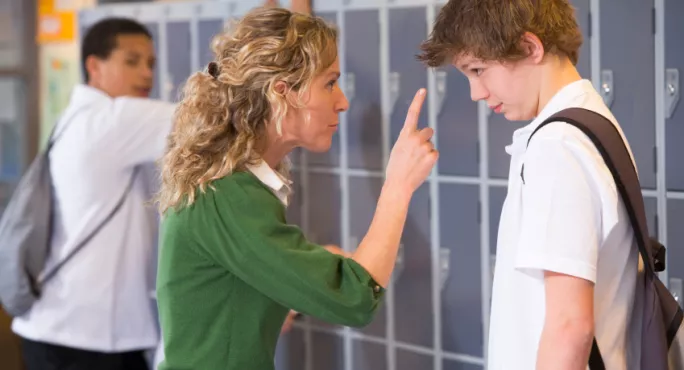Low-level disruption is reported to be the cause of children losing 38 days of their education a year. This adds up to 266 days lost on average in their whole primary education, due to others misbehaving. I’m sure that these statistics come as no surprise to you, but there are simple ways of lessening the impact of low-level disruption on others.
-
Use non-verbal communication
Non-verbal communication is a powerful, swift and effective way to stop low-level disruption. You can continue teaching your lesson while giving the culprits a simple shake of the head, hand signal to stop, or using your infamous “teacher stare”.
By using your presence and circulating the room while delivering, you can minimise the chance of low-level disruption occurring in your classroom. If it does arise, then a simple hand on the shoulder can effectively put an end to it.
- Use the strategy of tactical ignoring
While this has some drawbacks, let’s focus on the positives for now. If you have the luxury of having another adult in your class, you can be tactically ignoring the low-level behaviour, leaving the additional adult within your classroom to swiftly deal with the disruption presenting itself.
Once they have dealt with the situation, your colleague can continue to act as a distraction for the child by using their skills of questioning to refocus the child on their task or helping them to engage with the lesson, before they continue with their planned role for that lesson. You can check in during the rest of the lesson to ensure that the focus remains.
- Know your students well
If you know that a child will struggle to focus during a specific activity and that this may lead to low-level disruption, then have a plan of action to divert it.
Provide them with an alternative activity to focus their attention. You can use stress balls, mindfulness colouring or Fidget Busters for this.
Just because a child is not making eye contact with you, it doesn’t mean that they aren’t listening. Some children need more to occupy them, help them to listen and, in turn, engage with your lesson.
- Have high expectations
By asking the above question and implementing ideas like these, it is apparent that you already have high expectations of your children.
Expect your children to focus and engage with your lessons. Give them every opportunity to do so and they will. They will progress and, most of all, they will enjoy the experience that you are providing for them in school.
Tracey Lawrence is assistant headteacher and specialist leader of education in social, emotional and mental health at Danemill Primary School in Leicester. She tweets @BehaviourTeach.




